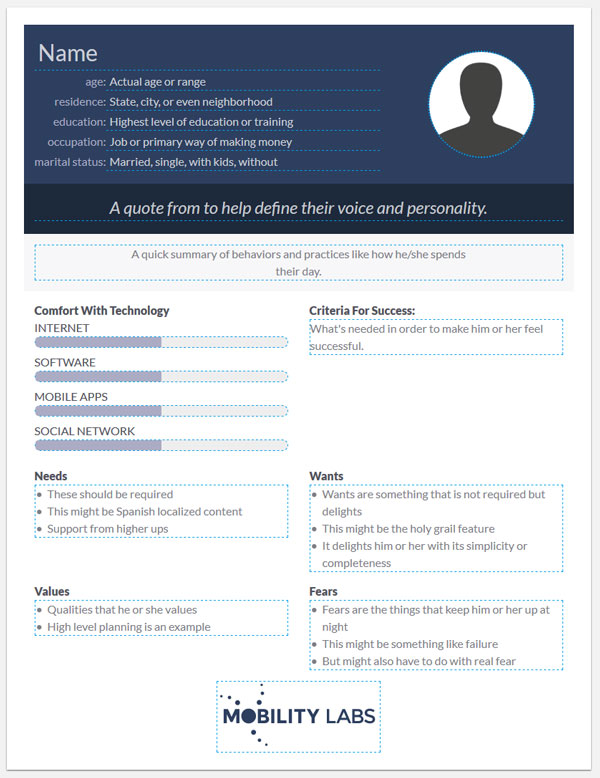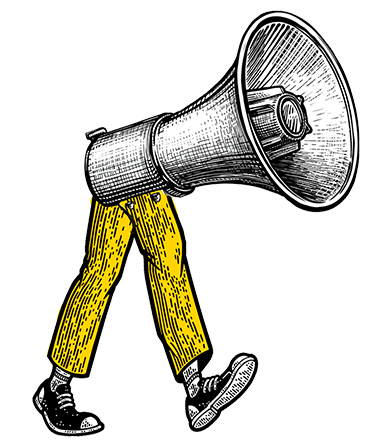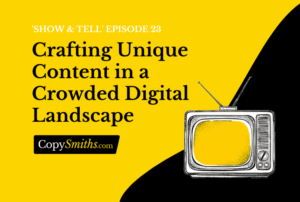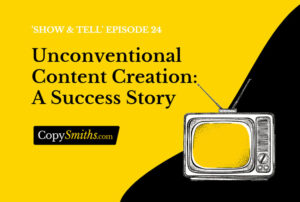Home » Content Marketing » 3 Characteristics of an Effective Content Map

3 Characteristics of an Effective Content Map
Without an effective content map, it’s impossible to deliver the right content to the right person at the right time.
These maps give you a glimpse into the lives of your audience with deep insights, such as what content types are most engaging and what the best-performing touchpoints are.
In turn, these insights help you build marketing efficiency by directing the focus of your time and resources.
With this much to gain, what exactly makes a content map effective?
We’ve gathered three must-have characteristics to help you figure this out, including buyer personas and buying journeys.
As we delve into them, you’ll learn:
- How buyer personas make content maps effective
- Why buying journeys are flexible and need reviews
- Where to find templates for your content map
1: Buyer Personas That Give Perspective
An effective content map needs buyer personas to help eCommerce businesses, like yours, gain perspective into the minds of their audience.
This perspective allows you to empathize with the challenges of your customers, understand their needs, and tailor your content to produce that “That’s so me” feeling.
As such, the most effective content maps capture insightful demographic data for their buyer personas such as:
- Age group
- Location
- Values and interests
- Goals
- Pain points
Recently, JetBlue Airways revealed their buyer persona, which was based on the demographic information listed above. The following table breaks down their findings.
| JetBlue Buyer Persona | Demographic Information |
| A young traveler | Age |
| Traveling with a low budget | Goal |
| Prioritizes speed of service and comfort | Pain points |
| Loves to be engaged via Twitter | Interest |
At a glance, you instantly understand that JetBlue’s content strategy must focus heavily on Twitter with lots of information about quick and budget travel options.
This information forms a solid foundation for delivering the right content to the right person, making JetBlue’s content map effective.
Developing Your Buyer Persona
Employ interviews and surveys to capture the demographic data discussed above—age, values, location, and pain points.
Similar to the JetBlue example above, include a section on your buyer persona that notes their preferred mode of consuming content. This information could be classified under “values” or stand alone, as it does in this example template available at CopySmiths.
You’ll notice that this approach probes deep into the modes of consuming content with various options, including mobile apps and social networks. This gives a clearer picture of what type of content to produce, boosting the effectiveness of your content map.

Source: personagenerator.com
When Virgin Mobile first entered an already-crowded US mobile phone market, they chose to target the youth. As such, the team embarked on a buyer persona to guide much of their marketing content, which involved blog posts.
Interviews and surveys revealed that Virgin Mobile’s audience loved to engage with their peers and—above all—loved music. This revelation informed Virgin Mobile’s content strategy, which led to a close partnership with MTV (Music Television) and music festivals.
2: Buying Journeys That Explain Search Intent
An effective content map includes buying journeys to help businesses understand search intent as consumers engage with their content.
This knowledge adds a level of relevance to content and harnesses the power of “at the right time,” which boosts conversions.
Imagine seeing an enticing web banner on a new service provider right when your bill is due. You’d be more likely to follow up on that offer than you would if it didn’t have the “due” factor.
There are three stages to the buying journey you need to identify and tailor your content to. The following table highlights these stages and the mindset of your audience as they navigate them.
| Buying Stage | Traits |
| Awareness | The person is experiencing the pain point but doesn’t know what the cause is or the possible solutions |
| Consideration | The person understands the pain point and is learning about the available solutions but can’t rank them yet |
| Decision | The person is fully aware of the problem and the available solutions but is looking to identify the best offer |
At the awareness stage, your marketing content will need to focus on pain points and help your audience understand their problem.
Looking at our JetBlue example, where the pain point was service speed, your content will need to dwell more on why airlines have a big problem with keeping time. This builds authority in the mind of your audience and encourages them to explore more of your content.
At the consideration stage, your content must spend more time on possible solutions to the determined pain points. So, from our example on airlines, how can the audience get faster service? How can airlines work faster?
At the decision stage, your customers are fully aware of the solutions and will be weighing their options. At this point, you’ll need to dwell more on why your solution is best. In our example, why is JetBlue the fastest-serving airline?
Check out more content tips from CopySmiths for mapping your buyer’s journey.
Mapping Your Audience’s Buying Journey
3: A Review Mechanism That Builds Confidence
Employ social listening tools to find out what your audience is searching for online and map their journey. Usually, keywords will reveal the stage of a person’s buying journey.
Using our airline example above, you might see:
- Searches on “Why do airlines have slow service?” which signal that the person is at the awareness stage and looking to understand the problem
- Searches on “Which airlines have the fastest service?” which signal the consideration stage where the person is learning about available solutions
- Searches on “Why does JetBlue have the fastest service?” which means the buyer is at the decision stage and is ranking brands or solutions
With your buyer personas and journeys in place, an effective content map should also have a review mechanism in place to measure performance. This feature validates the accuracy of the persona you chose and the timing of the buyer journey.
The flexible timeline of the buyer journey can easily affect a content map’s effectiveness. As a result, some instances might require you to modify your content map to accommodate the variation.
In that case, early detection gives you ample time to make adjustments without incurring inefficiencies in your marketing spend.
Consider an eCommerce business that publishes multiple blogs for each stage of the buying journey, but whose audience goes through every stage in one sitting or perhaps skips a stage.
Detecting this pattern early means adjusting blog content to appeal to all stages and reducing publications. This move frees up time for employees who can then direct their attention to other value-adding tasks.
Reviewing Your Content Map
Use quick surveys at various brand touchpoints to help you monitor buyer behavior. Verify that your mapping matches the responses you’ll receive.
Did customers visit your page at the end of the buying journey as expected? Or did they visit you immediately, skipping the second stage, and move directly to the decision stage?
This variation would require your content to close the deal early rather than wait for buyers to search for brand names and rankings. As a result, you’d spend more time focusing on why your solutions work.
Ensure your surveys are short to maximize the responses and effectiveness of your review process. A simple, “How did you first hear about us?” with a one-click response option will be enough to gather perspective and encourage feedback.
Here’s an example of a brief survey from Grapevine, an online store.

Source: Grapevine
It’s easy for Grapevine to identify their buyer stages by checking the type of content consumed at each touchpoint. Was the posted content targeting buyers at the awareness, consideration, or decision stage?
This knowledge allows Grapevine to easily adjust its content to match the length of the buyer’s journey at each point of contact, maximizing effectiveness.
Let CopySmiths Help You Build An Effective Content Map
So, there are three characteristics of an effective content map for your business. Why not take it a step further with creative content from CopySmiths?
We help eCommerce businesses develop strategic, SEO-driven content through a reliable and regular supply of blog articles.
“CopySmiths is trategic and SEO results-driven, which is what we needed for our content. Their excellent use of SEO tools was impressive.” – Chris, Red Kite Design
We’ve written and published over 4,000 articles of various types, including:
- Pillar posts
- Case studies
- How-to guides
- Listicles
- Buyer guides
Subscribe to our newsletter, CopyZine, to learn more about our creative approach to eCommerce content that’s rooted in SEO principles.
CopySmiths
I'm Katrina McKinnon, founder of CopySmiths and Small Revolution. In my 20 years of experience, I have helped online businesses create high-performing content specifically on an eCommerce store's blog. Find me on LinkedIn and Twitter.

CopySmiths offers the best blog writing services for online stores.
If you'd like us to write blog articles for you, click here.
Most Recent
- 3 Bold Questions You Should Ask When Hiring A Content Writer

- 5 Practical Reasons You Should Use a Blog Post Template

- 4 Amazing Benefits of Using a Title Generator for New eCommerce Blogs

- 10 Awesome Bio Examples Your Online Store Blog Should Emulate

- 8 Basic Steps to Successful Content Development Every Time

Podcasts
Got a question?
Ask our friendly team about our article writing services.
Subscribe to CopyZine
Monthly, hand-picked stories of the best in eCommerce Content.





